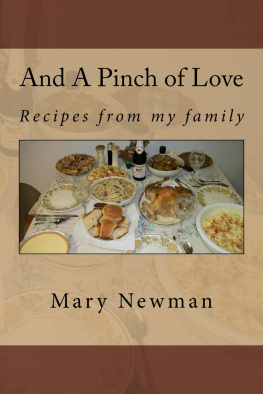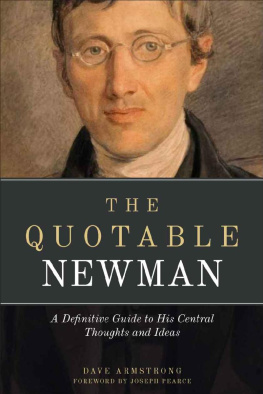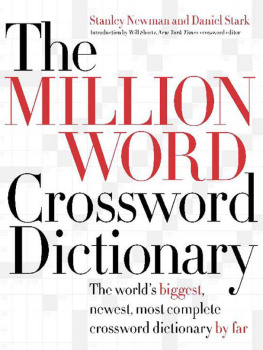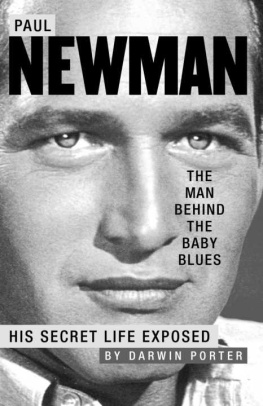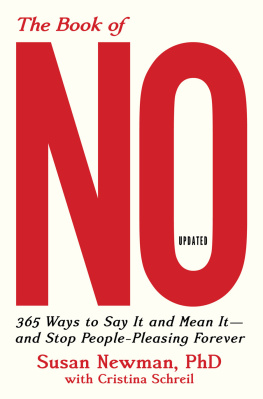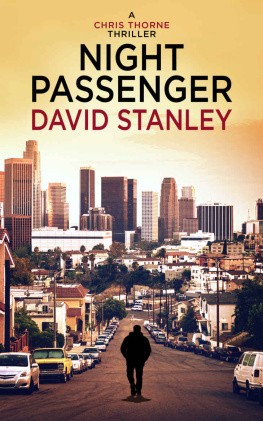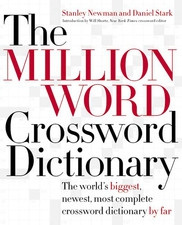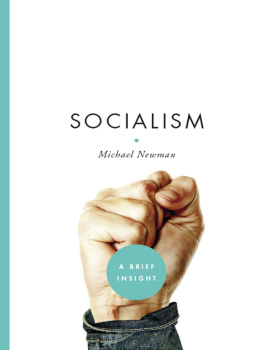Stanley Newman - Cruciverbalism
Here you can read online Stanley Newman - Cruciverbalism full text of the book (entire story) in english for free. Download pdf and epub, get meaning, cover and reviews about this ebook. year: 2006, publisher: Harper, genre: Science fiction. Description of the work, (preface) as well as reviews are available. Best literature library LitArk.com created for fans of good reading and offers a wide selection of genres:
Romance novel
Science fiction
Adventure
Detective
Science
History
Home and family
Prose
Art
Politics
Computer
Non-fiction
Religion
Business
Children
Humor
Choose a favorite category and find really read worthwhile books. Enjoy immersion in the world of imagination, feel the emotions of the characters or learn something new for yourself, make an fascinating discovery.
- Book:Cruciverbalism
- Author:
- Publisher:Harper
- Genre:
- Year:2006
- Rating:5 / 5
- Favourites:Add to favourites
- Your mark:
- 100
- 1
- 2
- 3
- 4
- 5
Cruciverbalism: summary, description and annotation
We offer to read an annotation, description, summary or preface (depends on what the author of the book "Cruciverbalism" wrote himself). If you haven't found the necessary information about the book — write in the comments, we will try to find it.
Cruciverbalism — read online for free the complete book (whole text) full work
Below is the text of the book, divided by pages. System saving the place of the last page read, allows you to conveniently read the book "Cruciverbalism" online for free, without having to search again every time where you left off. Put a bookmark, and you can go to the page where you finished reading at any time.
Font size:
Interval:
Bookmark:

Crossfire: The Pipsqueak Manifesto
A Day in the Life of a Crossword Fanatic
Inside the Grid: Basic Rules and 100 Essential Words
Crossword History: From the Worlds First to Java 1.4.2
Pulling Back the Curtain: The Hidden Rules of the Grid
Master Class: Getting Tournament-Ready (or at Least Saturday-Savvy)
I remember the date when I declared war on the New York Times crossword puzzle: October 19, 1984. It was the day of the LOA outrage. My annoyance with the Times puzzle was simmering much of that fallwho can forget the affront to Good Times TV star Jimmie Walker, lumped into the clue Comedian or former N.Y. mayor for an answer that employed the less-than-dy-no-mite! spelling, JIMMY WALKER? Then there was the infamous parting words clue for FAREWELL, an answer that a plurality of solversand lexicographerswould regard as one word. But LOA was what pushed me over the edge. Or, rather, its clue did: Seat of Wayne County, Utah.
Now, in the course of building a crossword puzzle, it is sometimes necessary to include the sequence L-O-A when youve got an exquisite stack of words that will work only if you can keep those three letters in the mix. Fair enough. The painless tradition is to give the clue Mauna ___, for the famous volcano in Hawaii, and move on. No doubt Times puzzle editor Eugene Maleska wanted to find a fresh way of cluing LOA. But Seat of Wayne County, Utah was beyond the pale. Aside from the 364 residents of Loa, Utah, at the time (I looked it up) and possibly a few cross-country truck drivers, it was unlikely that anyone who sat down with the Times puzzle that day would have known the three-letter answer to the Wayne County clue.
A small matter, you say? Ha! The LOA incident epitomized what was ailing the sickly Times puzzle in those days. A formerly grand institution known for its daring innovations, delightful wordplay, and all-around cerebrally stimulating fun had been reduced to this: A three-block dead zone in the puzzle, where you could get the L and O and still not be sure of the answer unless your last name was Rand or McNally. Getting it right depended entirely on answering the crossing words correctlyand spelling them right, too, since you had no way of knowing if the seat of Wayne County was correctly spelled LOA, LOB, or LOCor LOX, LOY, or LOZ, for that matter. That was a sorry predicament, but the truly annoying thing about the clue was what it reflected about the Times puzzle. You didnt know what the seat of Wayne County was, you didnt care what the seat of Wayne County was once youd learned it, and you wouldnt ever use that information again in your life unless it came up again in the Times puzzle. Mauna Loa, on the other hand, was a place of some renownthere was a certain value attached to it beyond its use in puzzling; you might hope to visit it one day on a vacation in Hawaii, or you might feel youd learned something interesting if, in a well-crafted puzzle, you found out that the phrase mauna loa means long mountain. My apologies to the people of Loa, but Seat of Wayne County, Utah was a useless piece of information that made it into the Times puzzle solely because Eugene Maleska took a pedants pleasure in flummoxing other people with obscure facts.
When the Wayne County crime against crosswords was committed, I had been publishing a newsletter, the Crossworders Own Newsletter, for less than a year. Occasionally Id take potshots at the Times puzzles for mistakes, pointless trivia, and their seeming hostility towardor outright ignorance ofthe contemporary world (Maleska once rejected a puzzle because he maintained that one answer, CAR SEAT, was a forced concept dreamed up by the puzzler. Tell that to his kids.). But now, post-LOA, I took up the battle against the Times as a crusade. Resentment against Maleskas regime had been brewing for years in the puzzle community, but taking on the Bigfoot of the business directly was considered lunacy. A strange parallel world had developed in the early 1980s as the best solvers and puzzlemakers in the country began flocking to Games magazine, even as the Times which these aficionados had once reveredcontinued to reign in the publics mind as the ultimate in puzzling. It was still the most prestigious showcase for puzzlemakers.
I knew a lot of the expert puzzlers because I had taken up cross-words with a passion a few years earlierbecoming a cruciver-balist, as crossword enthusiasts sometimes like to call themselvesafter having been just a casual solver in the past. But I did have a competitive streak and a good memory for the sort of facts that crop up in puzzles, and after entering a crossword contest on a whim in 1981, I was hooked. (The American Crossword Puzzle Tournament in Stamford, Connecticut, only a few years old at that point, has since become an institution among puzzlers and is still held at the Stamford Marriott each March.) I threw myself into learning how to solve puzzles faster, began building a collection of many hundreds of notecards recording unfamiliar words I encounteredyes, I was a tad obsessive about itand in a matter of months I was winning tournaments. The quality of the puzzles at the tournaments, the fascinating people who made them and solved them, the general atmosphere of sparky intelligence and good humor at the eventsall of this seemed worlds away from the dreary Times puzzle emanating from West 43rd Street in Manhattan seven days a week. The very people who were so lively and brilliant at the tournaments were often the same folks sending puzzles theyd constructed to Maleska and crossing their fingers in the hope that they hadnt violated any of his myriad strictures, thus inviting another one of his infamously vicious rejection letters.
This was an era when typical clues at the Times would refer to a Famed soprano or First words of St. Johns Gospel, Latin (Answer: IN PRINCIPIO ERAT). Fun, eh? Meanwhile, in what amounted to an underground movement, crossword tournaments were beginning to take off. The American Crossword Puzzle Tournament was already fairly well established after a few years in existence, and in 1982 Games magazine organized the first U.S. Open Crossword Puzzle Championship. My crossword self-improvement campaign was in full force at that point, and I was intent on winning the U.S. Open a few months after having taken the American Crossword title.
Two hundred and fifty contestants made it through the mail-in phase of the U.S. Open tourney to the final competition, held at New York University. It was a feast of fascinating words and ingenious clues. Some words were unfamiliar to me but I muddled my way through to spelling them correctly; other words were ones that, I was pleased to see, Id recently scribbled down on my note cards (KACHINA, a Hopi Indian doll, and ARUM, the name of the plant family that the jack-in-the-pulpit belongs to. Its also the name of the boxing promoter, first name Bob, but never mind). The un Timesian cluing was a pure delight. I was stumped for a long timeokay, probably a matter of seconds, but thats an eternity at these affairsby the clue Chromosome choices. Do chromosomes even make choices? And how could the answer fit into a four-letter space, especially when the fourth letter is probably an S, since clues given in the plural almost always generate an answer that ends in S? As I discovered, after some hasty crosswise solving that gave me a couple of letters, the inspired answer was X OR Y. I got that one right, but muffed another: In response to the clue Arctic assistant, I wrote ELK, thinking of Santa and Rudolph. The K crossed with the first box of the answer to Radio tuning abbreviation, but I just couldnt tune in the solution, which was FREQ for frequencyand would have turned the ELK into an ELF. Argh!
Font size:
Interval:
Bookmark:
Similar books «Cruciverbalism»
Look at similar books to Cruciverbalism. We have selected literature similar in name and meaning in the hope of providing readers with more options to find new, interesting, not yet read works.
Discussion, reviews of the book Cruciverbalism and just readers' own opinions. Leave your comments, write what you think about the work, its meaning or the main characters. Specify what exactly you liked and what you didn't like, and why you think so.



